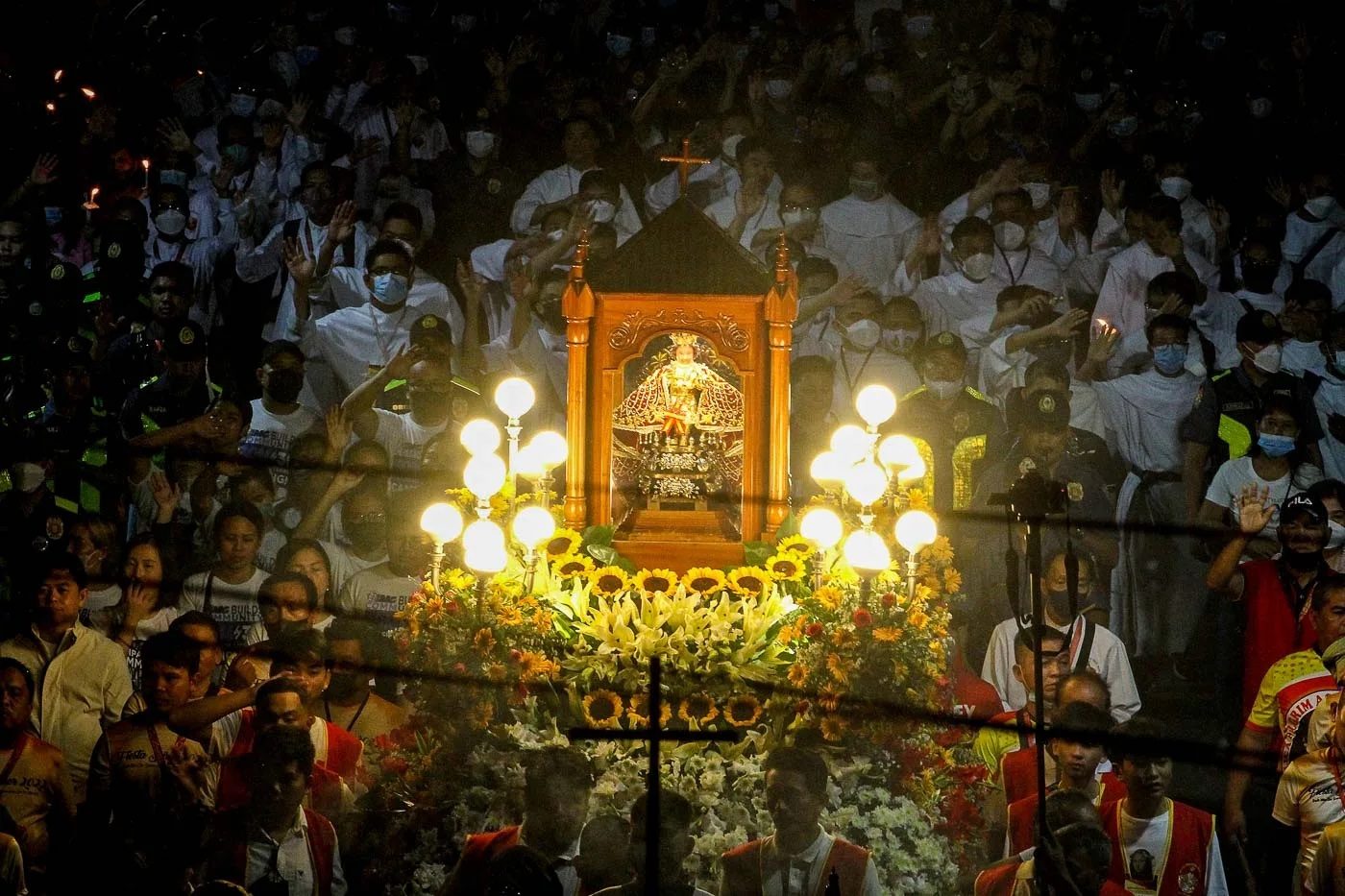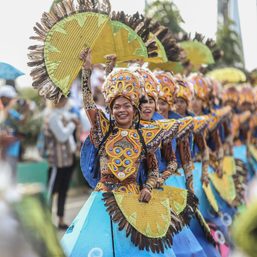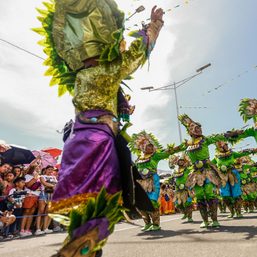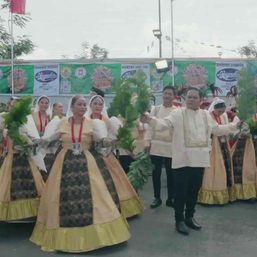SUMMARY
This is AI generated summarization, which may have errors. For context, always refer to the full article.

CEBU, Philippines – Devotees, both young and old, from Cebu and various parts of the world, journey to the Basilica Minore del Santo Niño to pay homage to the image of the Child Jesus in the days leading up to his feast day.
Due to its cultural and religious significance, many devotees aspire to witness the original image of Santo Niño, seeking a direct connection to the historical and revered figure of the Holy Child.
Fortunately, the four-century-old original wooden image of the Holy Child is accessible to the public.
“We try to correct people that the Augustinians are hiding it. The one they visit is the original image, the one people line up for,” said Father Ion Miranda, one of the priests at the Basilica Minore del Santo Niño.
The original image is encased in bulletproof glass inside the Santo Niño Chapel, located on the right side of the altar.
Marble Chapel
The Santo Niño Chapel, also known as the “Marble Chapel,” is now the permanent home of the original image of the Child Jesus. It was constructed as a manifestation of love and devotion to the Santo Niño. Joaquin Borromeo served as the architect of the chapel, which was constructed using donations from the devotees.
“If you notice when you visit, try to see the floor; there’s a part that’s already deep. It’s marble, but it has deepened because of the devotees venerating the image,” he said.
The Santo Niño, the religious foundation for the Sinulog festivities, was presented as a baptismal gift by the Portuguese explorer Ferdinand Magellan to Queen Juana of Cebu in 1521.
More than 450 years have passed since the custody of the image was entrusted to the Augustinians. However, Miranda said, it was only 40 years ago that the custody was turned over to the Filipino Augustinians. “Meaning, those assigned here at the Basilica are all Filipino. Before, the priests here were Spaniards,” he said.
Pilgrim image
While the Augustinian priests conclude the Fiesta Señor celebration in the Basilica during the Hubo mass on a Friday, right after the Feast Day, they continue the celebration in other parts of the country and the world.
The Hubo, which means “undress,” involves removing and changing the attire of the replica of the Holy Child from an elaborate one to a simpler one, symbolizing the conclusion of the Fiesta Señor celebration.
Miranda said after the Hubo, the pilgrim image of the Santos Niño will be taken to Singapore for the Filipino Catholic devotees there and, by tradition, to Ozamiz and other parts of Misamis Occidental and Zamboanga del Sur.
This year, right after the Hubo, the pilgrim image will also be brought to Ormoc and around the Archdiocese of Cebu. – Rappler.com
Wenilyn Sabalo is an Aries Rufo Journalism fellow.
Add a comment
How does this make you feel?

![[The Wide Shot] Peace be with China](https://www.rappler.com/tachyon/2024/07/wideshot-wps-catholic-church.jpg?resize=257%2C257&crop=311px%2C0px%2C720px%2C720px)
![[OPINION] A critique of the CBCP pastoral statement on divorce](https://www.rappler.com/tachyon/2024/07/TL-cbcp-divorce-statement-july-19-2024.jpg?resize=257%2C257&crop=285px%2C0px%2C722px%2C720px)


![[The Wide Shot] Was CBCP ‘weak’ in its statement on the divorce bill?](https://www.rappler.com/tachyon/2024/07/cbcp-divorce-weak-statement.jpg?resize=257%2C257&crop=258px%2C0px%2C719px%2C720px)






![[REFLECTION] Mary, Mother of the West Philippine Sea](https://www.rappler.com/tachyon/2024/07/may-mother-west-ph-sea-july-19-2024.jpg?resize=257%2C257&crop=293px%2C0px%2C751px%2C750px)
![[OPINION] Ignorance and prejudice](https://www.rappler.com/tachyon/2024/07/tl-ignorance-and-prejujdice.jpg?resize=257%2C257&crop_strategy=attention)





There are no comments yet. Add your comment to start the conversation.